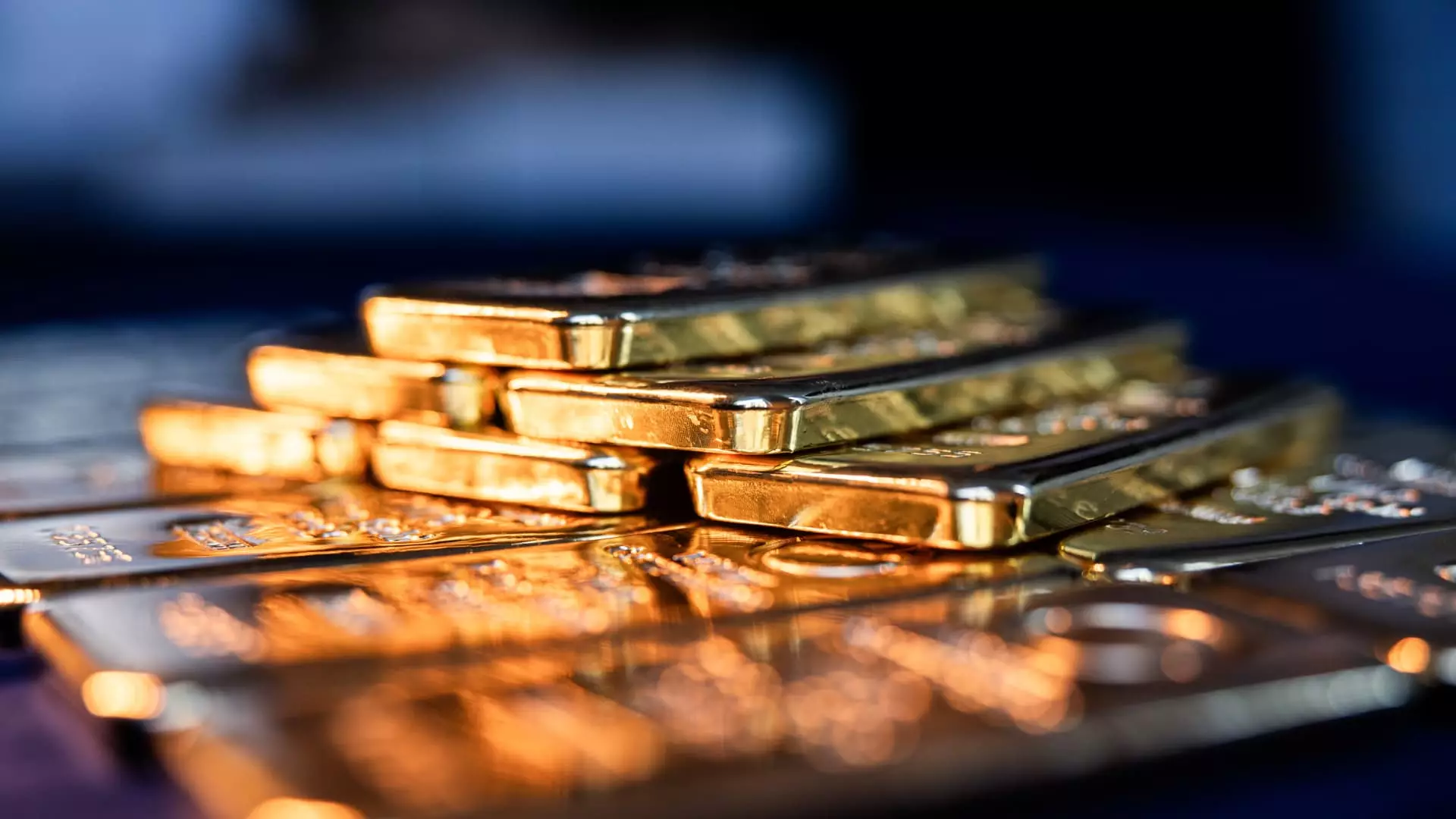In times of political and economic uncertainty, gold has historically served as a beacon of safety for anxious investors. As we find ourselves navigating through turbulent waters—marked by escalating trade tensions and fears of recession— the prices of gold have surged to extraordinary heights. This feverish interest has caused gold’s market price to climb past the $3,000 mark, with many investors viewing it as their backup plan when conventional financial systems falter. However, as alluring as the gleaming metal may seem now, one must be cautious about getting lured into a buying frenzy based solely on panic.
Peak Prices: A Cause for Alarm
Many experts, including Sameer Samana from the Wells Fargo Investment Institute, suggest that the gold market might be edging toward dangerous optimism. His warning signals a crucial point: with gold prices hitting record highs and a year-to-date increase of about 21%, the excitement among investors could be masking a looming risk. Chasing after soaring prices rarely ends well. Investors who plunge into this market at its peak might just be adding another layer of regret to their already fraught investment scenarios.
The notion that one might come “late to the party” rings true in this environment. The sheer percentage growth, coupled with the prevailing anxiety induced by U.S.-China trade skirmishes, paints a rather precarious picture. A market driven by panic can quickly shift, and those who entered at the height of enthusiasm may find themselves on the wrong side of the trend.
Understanding Investment Strategies: ETFs vs. Physical Gold
A multitude of financial advisors recommend an allocation of gold in an investment portfolio but caution against going overboard. The overwhelming consensus suggests keeping gold exposure to a mere 3% or so of one’s total assets. For the average investor, exchange-traded funds (ETFs) like SPDR Gold Shares (GLD) provide the most sensible route for gaining exposure to the gold market without the burdensome need for storage and security that accompanies physical gold.
It may seem romantic to possess a gold bar or coin, but the burdens of safeguarding such tangible assets might outweigh the emotional or financial benefits. Even so, there is a growing trend of consumers flocking to retailers like Costco, eagerly buying gold bars amid market turmoil. While this sentiment of “holding your investment” could translate to greater security for some, it also raises the paradox of whether tangible assets are indeed more dependable than their financial counterparts in this day and age.
The Diversification Dilemma
With the uncertainty clouding the global economic landscape, some investors are viewing gold as a reflexive strategy for diversification. However, inserting this precious metal into one’s portfolio should be executed judiciously. Instead of making hasty decisions driven by panic, individuals should look at the evolving nature of their financial goals.
While some financial advisors, like Winnie Sun, advocate for caution, recommending higher cash reserves and a thoughtful review of existing portfolios, others like Lee Baker suggest that gold remains a worthy investment during tumultuous times. The balance between prudent savings and speculative gold investments poses a complex conundrum for would-be investors.
The Illusion of Recession-Proof Investments
Some market pundits predict that, while gold may soar in the short term in reaction to economic fears, it tends to underperform during actual recessions. As Samana points out, bonds are historically more protective in downturns. The elusive gold investment, thus, risks becoming a mirage for those solely betting on ‘safe-haven’ assets.
The allure of gold jewelry adds another layer of complexity. High-quality pieces can command high prices due to their intrinsic metal value and craftsmanship. While investors may find solace in purchasing tangible jewelry, it’s essential to remember that they are purchasing more than just gold; they are tapping into art, history, and emotional connection, which can amplify both risk and reward.
A Cautionary Tale
As we navigate through this tumultuous economic landscape, we must temper our enthusiasm with a rigorous analysis. The allure of gold should not blind investors to the critical underlying realities of market trends. Indulging in gold investments today based solely on immediate trends could set one up for considerable disappointment in the long run. So while it glimmers, keep in mind: is it truly the right time to buy? Only a thorough self-assessment and a clear understanding of market dynamics can answer that pivotal question.

